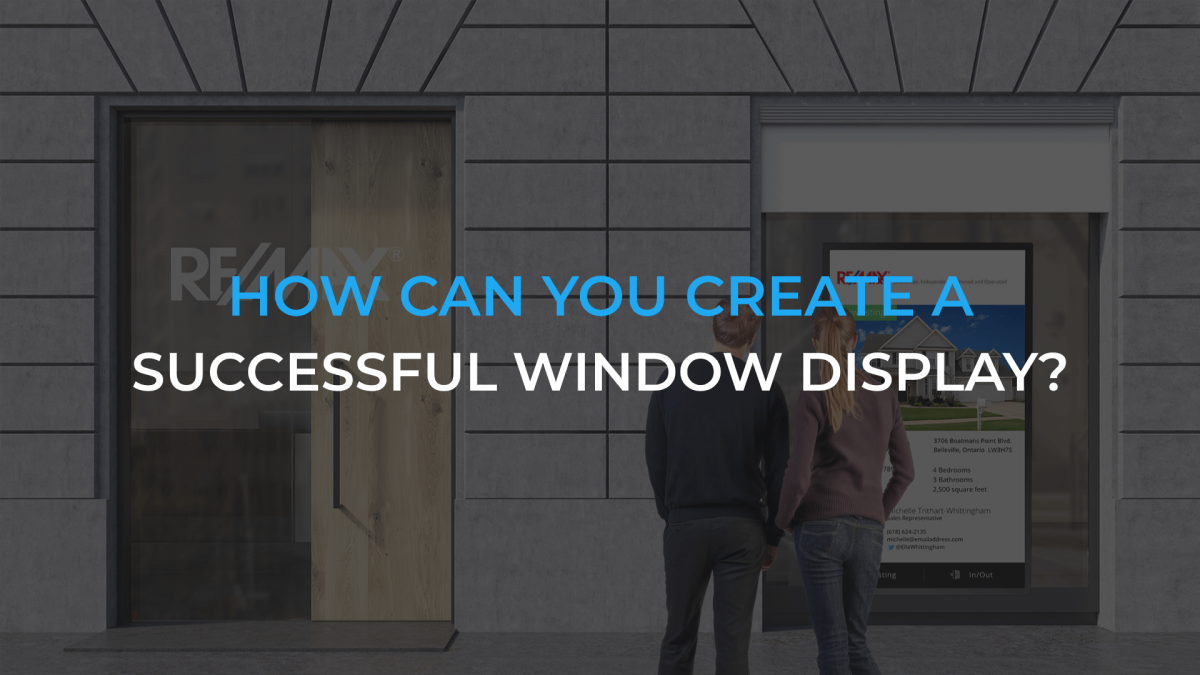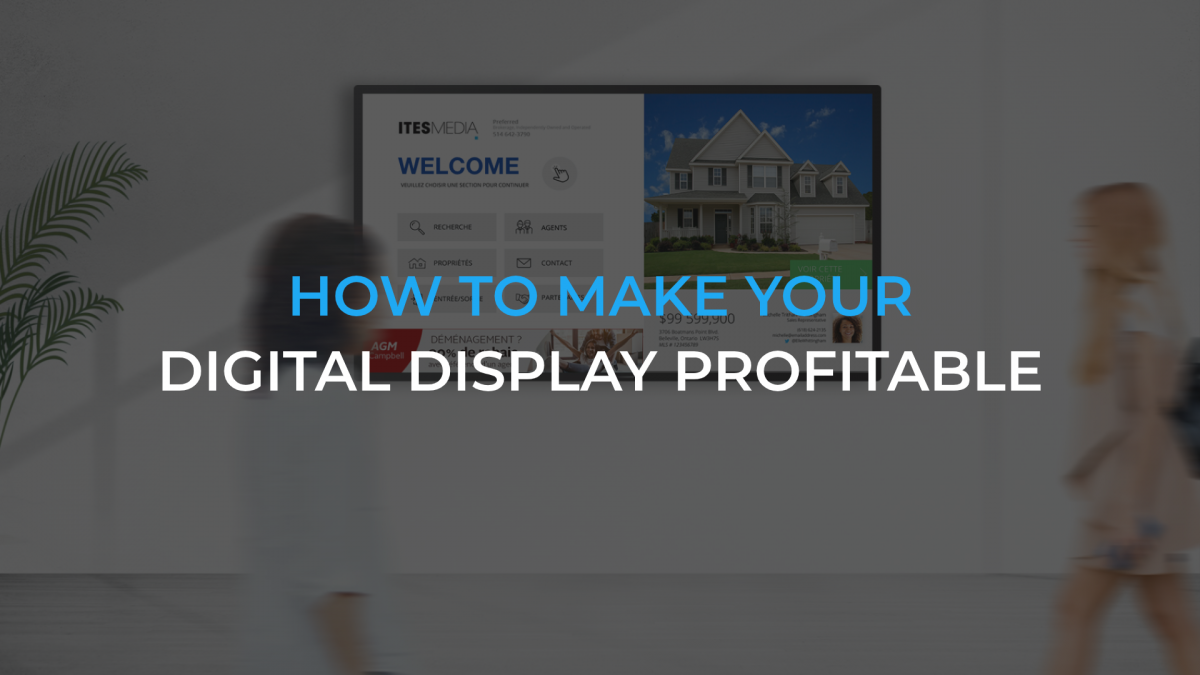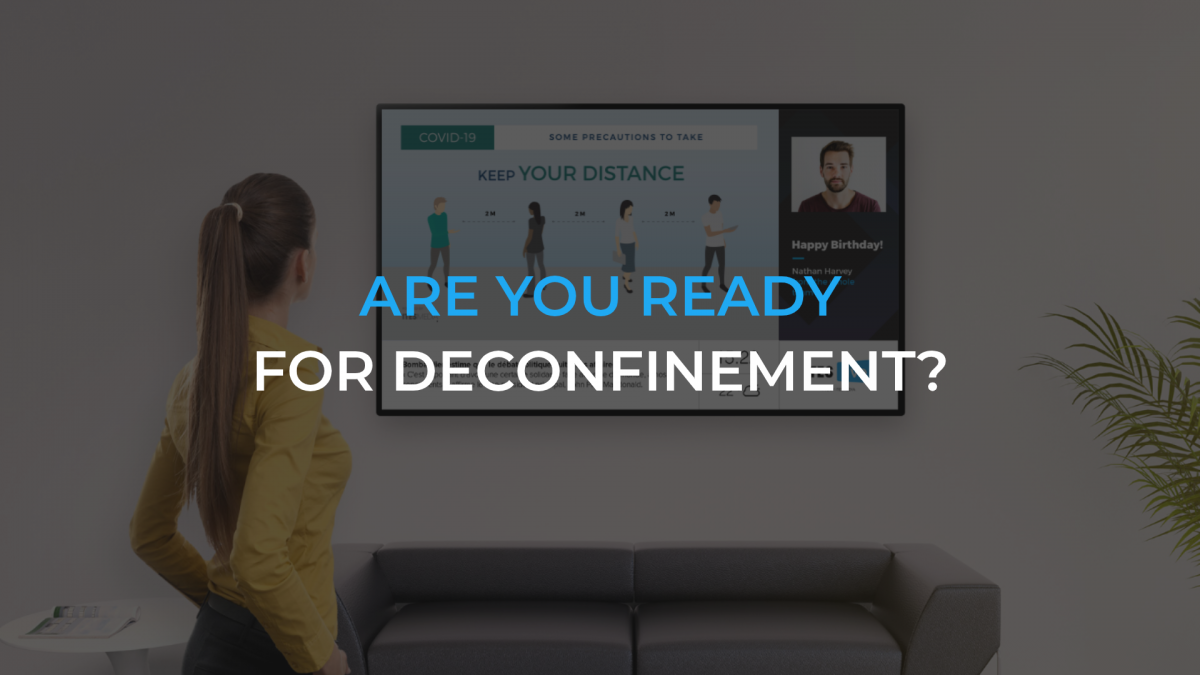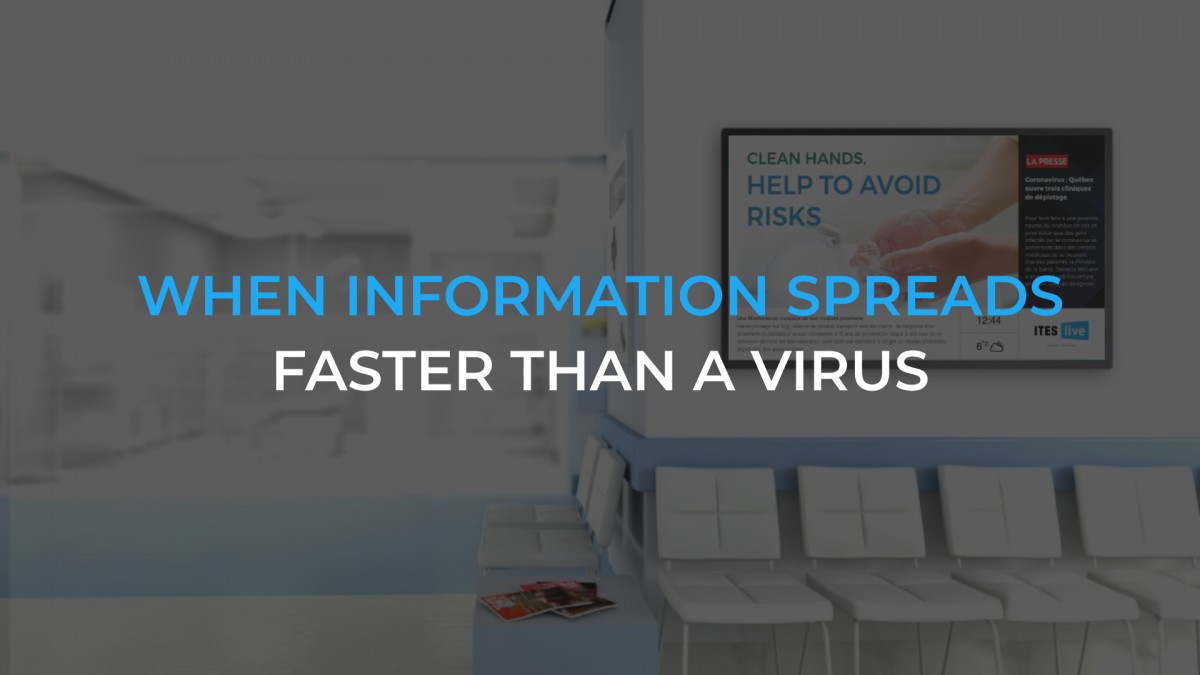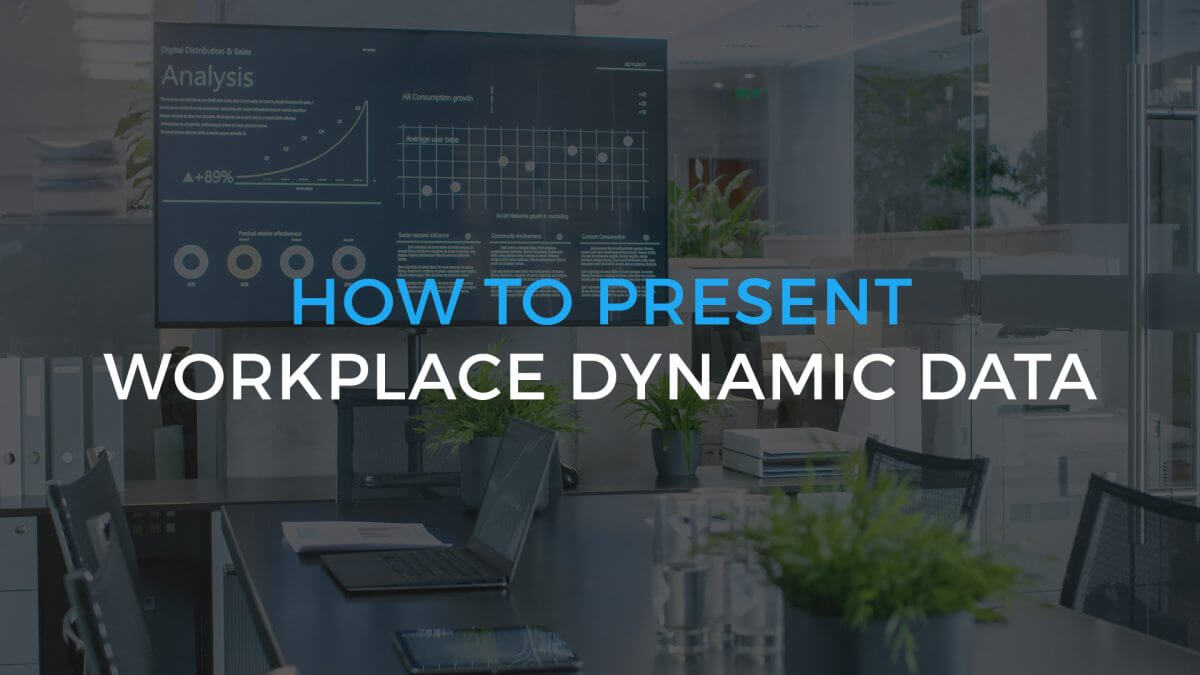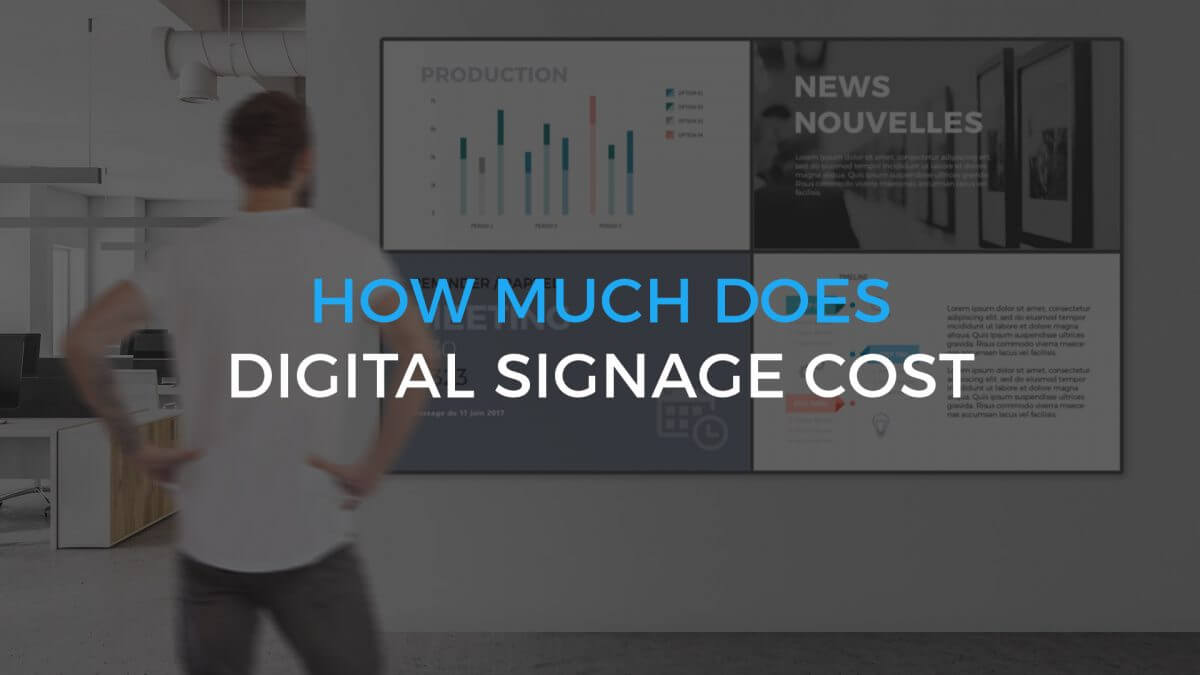Window displays is a marketing channel that has been widely used for many years, and for good reason. Physically, it is the marketing placement closest to your potential customers which can convince them to visit your business. Of course, the location of your business will greatly influence the reach of this channel. As such, businesses located on a busy pedestrian street should make every effort to optimize their windows – and digital signage is an excellent way to make enhance them. How can you create a successful window display?
Choosing screens with high brightness levels
Screens displayed in windows must inevitably “fight” against natural exterior light. Whether your window is exposed to sunlight or in the shade, a display with regular brightness won’t be able to compete with the elements and will scarcely be visible. The unit of measure of a screen’s brightness is called a “nit”. For instance, a standard display screen can have between 300 and 450 nits. In comparison, a digital display for windows usually has around 4,000 nits. As a reference, the new iPhone 12 has a screen brightness of 625 nits. An enlightened choice (pardon the pun) would be a “semi-outdoor” display type offered by important screen manufacturers such as Samsung and LG.

Choosing a discreet, nonintrusive support
Many support types can be used in windows. If possible, a discreet support is a better choice, as it will add more emphasis on the content displayed on the screen. Over the last few years, “floor-to-ceiling” support types used to hang the screens have become increasingly popular. These supports are not very expensive, but usually require installation by a professional.

Purchasing a professional digital software
Acquiring a professional digital signage software allows you to easily manage your displays. There are dozens of providers, and most of them offer a choice of license types at various prices, according to your needs. For example, ITESLIVE offers six different types of licenses, starting at only $19/month for a multi-zone display and many features such as remote management, weather, RSS feeds, display schedule and a model editor. This also includes hosting in Microsoft Azure, updates and technical support. Read also: Why should you try your digital signage software before buying?
Adapting your content to your audience
Who are you trying to reach? Pedestrians? Motorists? Both? Unfortunately, even if everyone can reach pedestrians and motorists, a choice must be made; these two targets are not at the same distance and move at different speeds. As such, the display duration and the font size need to be adapted – which will also impact the display size and the recommended minimal definition.
Landscape or portrait format
In windows, for paper displays, we are used to seeing posters, i.e. signs in portrait format. When using screens, it is recommended to also choose a portrait orientation. However, in some cases, depending on your content or the shape of your windows, it could be preferable to use a landscape format.
LCD or LED
There are two main types of displays for digital signage: LCD and LED. Which type is the best for window displays? The answer is not so simple: both technologies meet different needs, but the demarcation between them is not as clear as it once was. Both technologies can sometimes meet the same need, notably because LCD displays provide much more brightness than before, and LED screens now offer much higher resolutions. Of course, there is always a solution which will be better suited to a given situation, and choosing the right one is important to maximize your investment. As such, although these two display types offer high brightness levels, each of them has an important feature to their advantage. On the one hand, LCD displays still provide today a much higher resolution level. On the other hand, there is no limit to the size of LED displays. In the end, if your audience is near your displays (e.g. pedestrians walking by), it is usually recommended to use LCD displays; if it is far away (e.g. motorists on a highway), LED technology allows you to use oversized displays.
In conclusion, digital signage displayed in windows is a powerful marketing tool – if used properly. It will be interesting to see this type of project evolve, in particular the content adaptation using artificial intelligence and motion detection.

